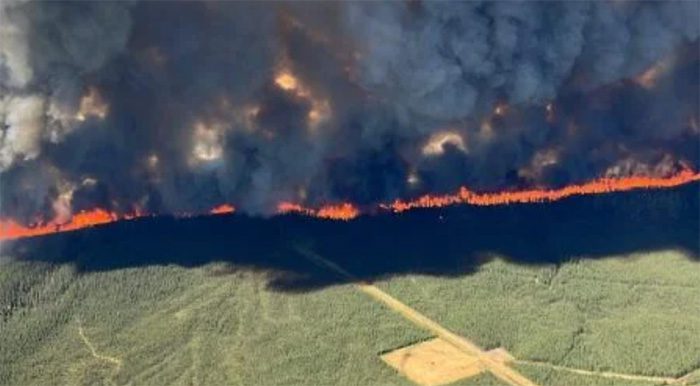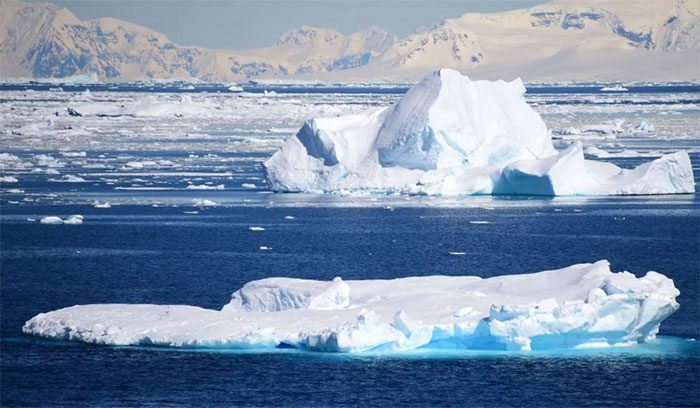According to CNN, halfway through 2023, numerous climate records are being shattered, prompting some scientists to raise alarm bells due to concerns that this may indicate the Earth is warming much faster than previously anticipated.
Scientists assert that while the alarming climate situation is concerning, it is not unexpected given the continuous rise in pollution and global warming, coupled with the emergence of the El Niño climate phenomenon which exacerbates global temperatures.
Researchers indicate that whether these extreme records signal that climate change is progressing beyond forecast models or simply aligning with predictions, they remain a significant concern about what is to come.
Jennifer Marlon, a research scientist at the Yale School of the Environment, stated: “These changes are deeply concerning as they will impact people this coming summer and every summer thereafter, until we reduce carbon emissions at a much faster rate than we currently are.”
The world has warmed by 1.2 degrees Celsius compared to pre-industrial times, and the next five years are projected to be the hottest on record.
Below are four climate trends illustrating how this year has been record-breaking and that the hottest months are still ahead.
Global Temperatures Surge
2023 is becoming one of the hottest years on record, as global data shows temperatures skyrocketing to unusually high levels.

Smoke rising from a wildfire in British Columbia, Canada on June 9. (Photo: THX/TTXVN).
According to an analysis by the Copernicus Climate Change Service of the European Union on June 15, the first 11 days of June recorded the highest temperatures for this time of year. Scientists noted that this is also the first time global air temperatures in June have exceeded pre-industrial levels by more than 1.5 degrees Celsius.
Temperature records are being broken worldwide.
In Canada, an unusual and oppressive heatwave is enveloping much of the country, with temperatures breaking numerous records. The heat has facilitated unprecedented early wildfires, burning an area about 15 times larger than the average for this time of year.
Several all-time temperature records were also broken earlier this month in Siberia, where temperatures soared above 37.7 degrees Celsius. Many regions in Central America, as well as Texas and Louisiana, are facing extreme heat. Puerto Rico experienced a severe heatwave this June, with temperatures reaching 48.8 degrees Celsius.
Many areas in Southeast Asia have endured record heat, while record temperatures in China have severely impacted wildlife and crops, raising concerns about food security.
Phil Reid from the Australian Bureau of Meteorology remarked: “The current situation is bizarre. This is the strangest El Niño we’ve seen. How can one identify or declare an El Niño when everywhere is hot?”
Unprecedented Ocean Heat

Rising ocean surface temperatures are alarming scientists. (Illustrative photo: AFP).
The oceans are warming to record levels and show no signs of slowing down. Ocean surface temperatures began alarming scientists in March when temperatures gradually increased and then surged to record highs in April, leaving scientists puzzled as to the reasons behind this phenomenon.
According to the National Oceanic and Atmospheric Administration (NOAA), last month was the hottest May on record for the world’s oceans. This warming trend has been ongoing for several years. In 2022, the world’s oceans set temperature records for the fourth consecutive year.
Climatologist Maximiliano Herrera stated he did not expect such rapid warming to occur so soon. He noted: “Even before the El Niño declaration, tropical regions and oceans had already undergone rapid warming. This was anticipated, but it is happening faster than before.”
The warming oceans are causing severe consequences, including coral bleaching, marine life die-offs, and rising sea levels. While El Niño typically results in fewer storms in the Atlantic, higher ocean temperatures enhance storm intensity in the Pacific.
Record Low Antarctic Sea Ice

Sea ice drift in Chiriguano Bay, Antarctica. (Photo: AFP/TTXVN).
Antarctic sea ice is at a record low for this time of year. Some scientists are concerned that this is yet another sign that the climate crisis has reached this isolated region.
By the end of February, Antarctic sea ice reached its lowest level since records began in the early 1970s, measuring only 1.7 million square kilometers. Ted Scambos, a glaciologist at the University of Colorado-Boulder, stated: “It’s not just a record low. The sea ice is declining very rapidly.”
As Antarctica enters winter and sea ice begins to form again, ice formation levels remain at record lows for this time of year.
According to Scambos, the decrease in sea ice is indeed unusual and alarming. The current sea ice extent in Antarctica is around 1 million square kilometers, lower than what it typically is at this time of year.
Scientists indicate there is a connection between the decline in sea ice and warm waters off the Indian Ocean, Pacific, and Atlantic. They noted that even a slight increase in ocean temperatures by 0.1 degrees Celsius can inhibit normal sea ice formation.
The reduction in sea ice also has severe implications for local wildlife, including penguins that rely on sea ice for feeding and nesting.
Record High CO2 Levels

Buildings in Beijing, China shrouded in thick smog on November 5, 2021. (File photo: AFP/TTXVN).
Earlier this month, scientists at NOAA and the Scripps Institution of Oceanography at the University of California reported that atmospheric CO2 levels reached a record high in May.
Scientists predict that this record will continue to rise steadily to levels not seen in millions of years. According to NOAA, current carbon pollution levels are over 50% higher than pre-Industrial Revolution levels.


















































